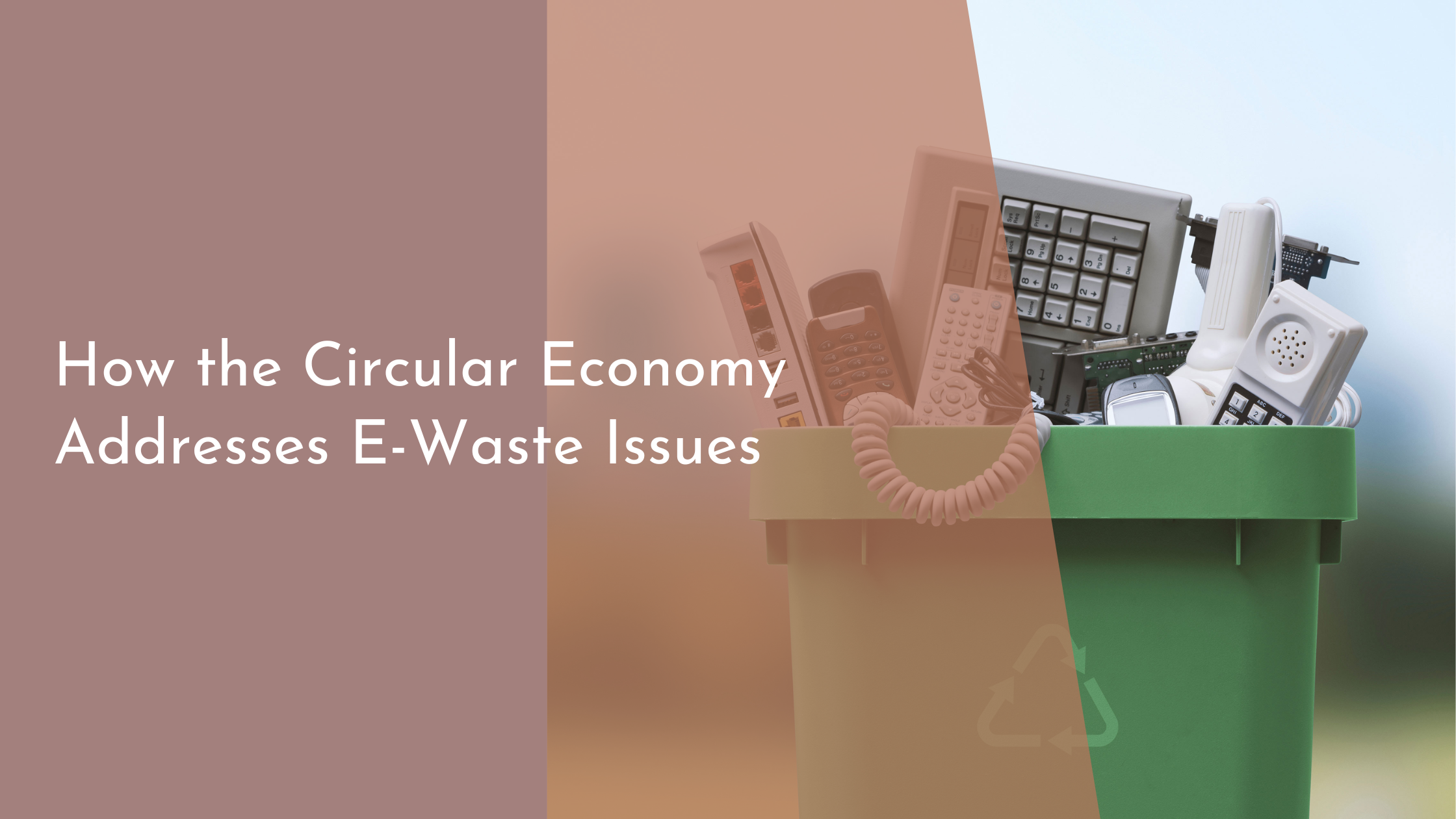How the Circular Economy Addresses E-Waste Issues
In our rapidly evolving digital age, electronic waste, or e-waste, has emerged as one of the fastest-growing waste streams globally. With millions of tons of e-waste generated annually, finding sustainable solutions for its management is crucial. Enter the circular economy—a transformative approach that offers promising strategies to tackle the e-waste crisis. By rethinking how we produce, consume, and dispose of electronic goods, the circular economy aims to create a more sustainable future. This article explores how the circular economy addresses e-waste issues through its underlying principles, innovative strategies, and successful implementations.
Understanding E-Waste and Its Global Impact
Electronic waste encompasses discarded electronic devices and components, including computers, smartphones, televisions, and other digital gadgets. As technology continues to advance, the lifecycle of electronic devices shortens, leading to a surge in e-waste generation. This poses significant environmental challenges, as e-waste often contains hazardous materials like lead, mercury, and cadmium, which can contaminate soil and water if not properly managed. Additionally, the improper disposal of e-waste contributes to the loss of valuable materials such as gold, copper, and rare earth elements, which could otherwise be recovered and reused.
The global impact of e-waste is multifaceted, affecting both the environment and human health. Developing countries often bear the brunt of e-waste disposal, receiving shipments from developed nations without the infrastructure to safely manage them. This leads to informal recycling practices that expose workers to toxic substances, resulting in adverse health effects. Furthermore, the sheer volume of e-waste exacerbates landfill overflow, increasing greenhouse gas emissions. Therefore, addressing e-waste is not only about waste management but also about fostering global equity and environmental stewardship.
Principles of the Circular Economy
The circular economy is built on three core principles: designing out waste and pollution, keeping products and materials in use, and regenerating natural systems. By reimagining product life cycles, the circular economy seeks to create systems that are restorative and regenerative by design. This involves rethinking traditional linear models of “take-make-dispose” and shifting towards closed-loop systems where waste is minimized, and resources are continuously cycled back into the economy.
In the context of e-waste, circular economy principles encourage the design of electronic products with longevity, reparability, and recyclability in mind. This means creating devices that are easier to disassemble and upgrading components instead of replacing entire units. By fostering an environment where products are built to last, the circular economy reduces the demand for new materials and places a greater emphasis on maintenance, refurbishment, and recycling. This not only conserves resources but also reduces the environmental impact associated with the production and disposal of electronic goods.
Strategies for E-Waste Management
To effectively manage e-waste within the framework of a circular economy, several strategies can be employed. One approach is the implementation of extended producer responsibility (EPR) policies, which hold manufacturers accountable for the entire lifecycle of their products. By requiring companies to take back and recycle their products, EPR encourages the development of more sustainable designs and promotes the use of recycled materials in new products.
Another strategy involves creating robust recycling and refurbishment infrastructures. Developing efficient and accessible collection systems ensures that e-waste is properly diverted from landfills and channeled towards facilities capable of handling and processing it. Investing in advanced recycling technologies can enhance the recovery of valuable materials, reducing the need for virgin resources. Moreover, consumer awareness campaigns can empower individuals to make informed decisions about how they dispose of their electronic devices, further supporting circular practices.
Success Stories in Circular E-Waste Solutions
Several companies and initiatives worldwide are already demonstrating the benefits of circular economy principles in e-waste management. For instance, Dell’s closed-loop recycling program diverts e-waste from landfills by incorporating recycled plastics into new products. By doing so, Dell not only reduces its environmental footprint but also lowers material costs, showcasing the economic viability of circular practices.
Additionally, social enterprises like Fairphone are pioneering the design of modular smartphones that prioritize durability and repairability. By enabling users to easily replace components like batteries and screens, Fairphone extends the life of its devices, reducing the need for frequent replacements. These initiatives serve as inspiring examples of how innovative circular solutions can transform the e-waste landscape, offering both environmental and economic benefits.
As e-waste continues to pose significant challenges globally, the circular economy provides a hopeful framework for sustainable management. By embracing principles that prioritize waste reduction, resource conservation, and product longevity, we can mitigate the environmental and social impacts of electronic waste. Success stories from companies and initiatives around the world highlight the potential of circular strategies to revolutionize the way we handle e-waste, promoting a more sustainable and equitable future. Ultimately, integrating circular economy principles into e-waste management is not just an environmental imperative but also an economic opportunity, paving the way for a cleaner and more resource-efficient world.

